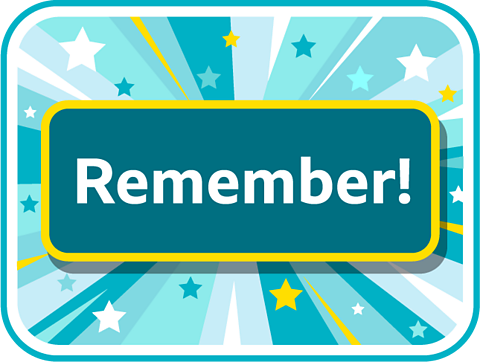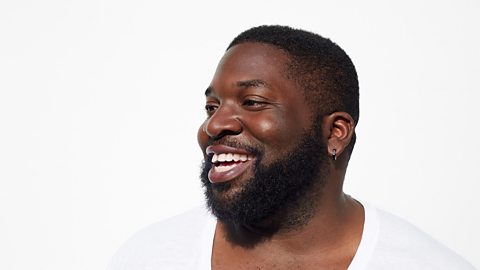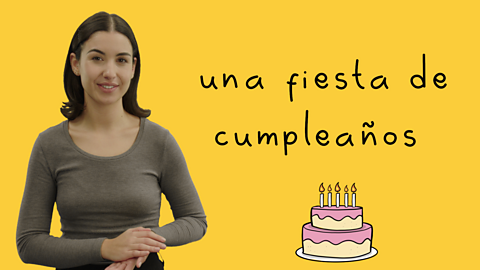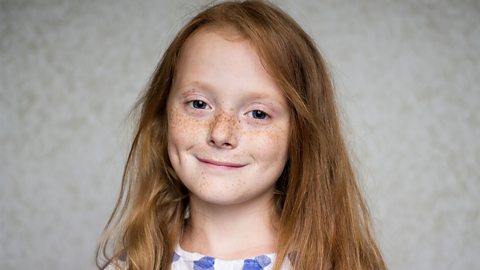Describing people in Spanish.
When you’re describing how you or other people look or are then ser - the verb ‘to be’ is a good place to start.
Soy - I am.
Es - he/she is.
You don’t need to include ‘I, you, he/she’ because the verb tells you who or what it’s about.
Soy alto - I am tall.
Es pequeña - she is small.
Soy deportivo - I am sporty.
Es simpática - she is nice.
It’s also good to be able to say what people have.
Tener - to have.
Tengo - I have.
Tiene - she has.
Tengo el pelo largo - I have long hair.
Tiene los ojos verdes - she has green eyes.
You can say what you wear using llevar - to wear.
Llevo - I wear.
Lleva - she wears.
Llevo gafas - I wear glasses.
Lleva un hiyab - she wears a hijab.
With ser (to be), tener (to have) and llevar (to wear) you can say a lot about yourself or other people!
Describing physical appearance
It is useful to be able to describe what you or someone else looks like physically.
To find out from someone what they look like, ask ¿Cómo eres? (What do you look like?)
To reply, use the relevant part of the verb ser (to be).
You can see the verb ser in the table below.
| Spanish | English |
|---|---|
| soy | I am |
| eres | you are |
| es | he/she/it is |

A verb is a doing word or an action, for example ‘play’, ‘run’, ‘read’.
Apart from the verb ser (to be), you need adjectives to describe what somebody looks like.
For example:
¿Cómo eres? - What do you look like?
Soy alto - I am tall.
Notice that alt_o_ ends in o.
Since -o is usually the masculine ending for adjectives in Spanish, this tells us that the person answering the question is male.
¿Cómo eres?
What do you look like?
Soy alto.
I am tall.

An adjective is a word that describes people, places or things.
Make sure you use es to describe somebody else.
For example:
¿Cómo es tu madre? - What is your mum like?
Es baja - She is short.
¿Cómo es tu madre?
What is your mum like?
Es baja.
She is short.
Can you use the language in this table to describe yourself and other family members?
| Spanish | English |
|---|---|
| ¿Cómo eres? | What do you look like? |
| Soy… | I am… |
| ¿Cómo es tu hermana? | What does your sister look like? |
| Es… | He/She is… |
| alto/a | tall |
| bajo/a | short |

Adjectives always need to agree with the person being described.

Describing hair
To ask someone what their hair is like ask ¿Cómo tienes el pelo?
Use the verb tener (to have) to reply.
You can see the verb tener in the table below.
| Spanish | English |
|---|---|
| tengo | I have |
| tienes | you have |
| tiene | he/she/it has |
Use tengo to describe your own hair.
For example:
¿Cómo tienes el pelo? - What is your hair like?
Tengo el pelo largo y rubio - I have long, blonde hair.
¿Cómo tienes el pelo?
What is your hair like?
Tengo el pelo largo y rubio.
I have long, blonde hair.
Use tiene to describe someone else’s hair.
For example:
Tu hermana, ¿cómo tiene el pelo? - What is your sister's hair like?
Tiene el pelo corto, liso y negro - She has short, straight, black hair.
Tu hermana, ¿cómo tiene el pelo?
What is your sister´s hair like?
Tiene el pelo corto, liso y negro.
She has short, straight, black hair.
The word for hair (el pelo) is masculine and singular, so the adjectives to describe hair must agree with the word pelo by also being masculine and singular and not with the person you are describing.
Look at the language in this table and use it to help you describe your own hair in detail, or someone else’s hair.
| Spanish | English |
|---|---|
| ¿Cómo tienes el pelo? | What is your hair like? |
| Tengo el pelo… | I have … hair |
| ¿Cómo tiene el pelo? | What is his/her hair like? |
| Tiene el pelo… | He/She has … hair |
| corto | short |
| largo | long |
| rizado | curly |
| ondulado | wavy |
| liso | straight |
| negro | black |
| rubio | blonde |
| castaño | brown |
| gris | grey |
| pelirrojo | red |
Describing eyes
To ask someone what their eyes are like you can say:
- ¿Cómo son tus ojos? - What are your eyes like?
For example:
¿Cómo son tus ojos? - What are your eyes like?
Tengo los ojos azules - I have blue eyes.
¿Cómo tienes los ojos?
What are your eyes like?
Tengo los ojos azules.
I have blue eyes.
Use tiene to describe someone else’s eyes.
For example:
Tu hermano, ¿cómo tiene los ojos? - What are your brother’s eyes like?
Tiene los ojos verdes - He has green eyes.
Tu hermano, ¿cómo tiene los ojos?
What are your brother’s eyes like?
Tiene los ojos verdes.
He has green eyes.
The word for eyes (los ojos) is masculine and plural, so the adjectives to describe eyes must also be masculine and plural.
Look at the language in this table and use it to help you describe your own eyes in detail, or someone else’s eyes.
| Spanish | English |
|---|---|
| ¿Cómo tienes los ojos? | What colour are your eyes? |
| Tengo los ojos… | I have … eyes |
| ¿Cómo tiene los ojos? | What colour are his/her eyes? |
| Tiene los ojos… | He/she has … eyes |
| verdes | green |
| azules | blue |
| marrones | brown |
| grises | grey |
Notice that there are the two different words for brown:
marrón
castaño
Use marrones when talking about eye colour and castaño when talking about hair colour.
For example:
Mi hermana tiene los ojos marrones - My sister has brown eyes.
Tengo el pelo castaño - I have brown hair.
Describing other features
To describe other physical features, like being bald, having freckles or wearing glasses you can use the verbs ser (to be), tener (to have) and llevar (to wear).
This is the verb llevar:
| Spanish | English |
|---|---|
| llevo | I wear |
| llevas | you wear |
| lleva | he/she/it wears |
For example:
¿Llevas gafas? - Do you wear glasses?
No, no llevo gafas - No, I don't wear glasses.
Mi madre lleva gafas y un hiyab - My mother wears glasses and a hijab.
Mi abuelo lleva barba y bigote - My grandfather has a beard and a moustache.
Mi padre es calvo - My father is bald.
Tengo pecas - I have freckles.
Use the table below to create a detailed description of yourself and someone else that you know.
| Spanish | English |
|---|---|
| llevo gafas | I wear glasses |
| llevo barba | I have a beard |
| llevo bigote | I have a moustache |
| soy calvo | I am bald |
| llevo un hiyab | I wear a hijab |
| tengo pecas | I have freckles |
| lleva gafas | he/she wears glasses |
| lleva barba | he has a beard |
| lleva bigote | he has a moustache |
| lleva un hiyab | she wears a hijab |
| es calvo | he is bald |
| tiene pecas | he/she has freckles |

Image caption, Mi hermano lleva barba - my brother has a beard
1 of 5
Listen to these two people describe what they look like.
Don't forget to click on the Audio Transcript for the translation!
Tengo el pelo largo, rubio y ondulado. Tengo los ojos azules. Llevo gafas.
I have long, blonde, curly hair. I have blue eyes. I wear glasses.
Tengo el pelo corto, castaño y liso. Tengo los ojos marrones. Tengo barba pero no tengo pecas.
I have short, brown, straight hair. I have brown eyes. I have a beard but I do not have freckles.
Read Tom and Nat's descriptions of themselves and complete the activity.
Tom: Tengo el pelo largo y castaño. No llevo barba. Tengo los ojos azules.
Nat: Tengo el pelo rubio y ondulado. Llevo gafas. No tengo pecas.
Describing personality
To describe someone’s personality, use the verb ser (to be) and different adjectives.
Make sure that adjectives agree with the person that they are describing.
For example:
Me llamo María. Soy inteligente y simpática - I am called María. I am clever and kind.
Mi mejor amigo es hablador pero creativo - My best friend is chatty but creative.
Remember that adjectives that end in -e are the same in the masculine and feminine forms.
For example:
- Mi primo es activo y amabl_e_ - My cousin is active and nice.
Use the tables below to describe your personality and the personality of someone that you know.
Don’t forget to use the correct form of the adjective for the person you are describing.
| Spanish | English |
|---|---|
| ¿Cómo es tu personalidad? | What sort of person are you? |
| Soy… | I am… |
| ¿Cómo es tu hermano/tu hermana? | What sort of person is your brother/your sister? |
| Es… | He/She is… |
| Es simpático | He is friendly |
| Es simpática | She is friendly |
| Es generoso | He is generous |
| Es generosa | She is generous |
| Es gracioso | He is funny |
| Es graciosa | She is funny |
| Es honesto | He is honest |
| Es honesta | She is honest |
Have a look at this downloadable vocabulary list to see more words to describe people
You could also add intensifiers before the adjective to enhance your language.
For example:
Mi hermano es muy creativo - My brother is very creative.
Mi madre es un poco estricta - My mother is a bit strict.
Can you use these intensifiers to describe different people’s personalities in more detail?
| Spanish | English |
|---|---|
| muy | very |
| un poco | a bit |
| bastante | quite |
| demasiado | too |
If you want to compare two things, you can use más (more), followed by an adjective and que (than) followed by a noun.
The adjective still needs to agree with whatever is being described.
For example:
- Mi hermana es más alta que mi hermano - My sister is taller than my brother.
- Mi madre es más inteligente que mi padre - My mother is more intelligent than my father.
- Soy más bajo que mi hermana - I am shorter than my sister.
Video
Watch this video then test your understanding of describing people in Spanish in the short quiz!
PAULA: ¡Hola!
ÁLVARO: ¡Hola!
PAULA: ¿Qué tal?
ÁLVARO: Muy bien, gracias. ¿Y tú?
PAULA: Muy bien, gracias. ¿Quieres algo de beber?
ÁLVARO: Si, un zumo de naranja por favor.
PAULA: Vale, y yo un té.
WAITER (off screen): Ahora voy.
ÁLVARO: ¿Qué vas a hacer más tarde?
PAULA: Más tarde voy a ver a mi amiga Fátima. Es una alumna nueva.
ÁLVARO: No la conozco… ¿Cómo es?
PAULA: Fátima es alta y… con los ojos verdes.
ÁLVARO: ¿Sí…qué más?
PAULA: Ummm….lleva gafas.
ÁLVARO: ¡Hmmm……no, no sé quién es!
PAULA: Es una chica muy simpática…es muy deportiva…y siempre juega al baloncesto después del colegio.
ÁLVARO: Yo no juego al baloncesto.
ÁLVARO: ¿Tiene una hermana?
PAULA: Tiene una hermanastra pequeña que se llama Carolina. Carolina tiene siete años y tiene el pelo largo.
PAULA: Hola Fátima.
PAULA: Eres muy graciosa. Vale. Nos vemos en el centro comercial a las cuatro de la tarde. Vale. Hasta luego.
ÁLVARO: ¿Puedo ir también? Y así puedo conocer a Fátima.
PAULA: ¡Claro!
WAITER: ¿Qué queréis tomar?
PAULA: Un té con leche por favor.
WAITER: ¿Y para ti?
Translation:
PAULA: Hello!
ÁLVARO: Hello!
PAULA: How are you?
ÁLVARO: Very well, thanks, and you?
PAULA: Very good, thanks. Do you want something to drink?
ÁLVARO: Yes, an orange juice please.
PAULA: OK, and I’ll have a tea.
WAITER (off screen): I’ll be right there
ÁLVARO: What are you going to do later?
PAULA: I’m going to see my friend Fatima later. She’s a new student.
ÁLVARO: I don’t know her. What is she like?
PAULA: Fatima is tall… with green eyes.
ÁLVARO: Yes…what else?
PAULA: Ummm….she wears glasses.
ÁLVARO: Hmmm……no, I don’t know who she is!
PAULA: She’s a really nice girl…. very sporty…and she always plays basketball after school.
ÁLVARO: I don’t play basketball
ÁLVARO: Does she have a sister?
PAULA: She has a younger step-sister called Carolina. Carolina is seven years old and has long hair.
PAULA: Hi Fatima.
PAULA: You are very funny. OK. We’ll meet at the shopping centre at 4pm. OK. See you later.
ÁLVARO: Can I come too? That way, I’ll be able to meet Fatima.
PAULA: Of course!
WAITER: What would you like?
PAULA: A tea with milk please.
WAITER: And for you?
GCSE exam dates 2025
Find out everything you need to know about the 2025 GCSE exams including dates, timetables and changes to exams to get your revision in shape.

More on Topics
Find out more by working through a topic
- count4 of 9

- count5 of 9





